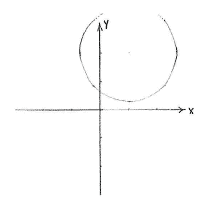Solution 4.1:6b
From Förberedande kurs i matematik 1
(Difference between revisions)
m |
|||
| (4 intermediate revisions not shown.) | |||
| Line 1: | Line 1: | ||
| - | + | A quick way to interpret the equation is to compare it with the standard formula for the equation of a circle with centre at (''a'',''b'') and radius ''r'', | |
| - | + | ||
| - | < | + | {{Displayed math||<math>(x-a)^2 + (y-b)^2 = r^2\,\textrm{.}</math>}} |
| - | {{ | + | |
| + | In our case, we can write the equation as | ||
| + | |||
| + | {{Displayed math||<math>(x-1)^2 + (y-2)^2 = (\sqrt{3})^2</math>}} | ||
| + | |||
| + | and then we see that it describes a circle with centre at (1,2) and radius <math>\sqrt{3}\,</math>. | ||
| + | |||
| + | |||
| + | [[Image:4_1_6_b.gif|center]] | ||
Current revision
A quick way to interpret the equation is to compare it with the standard formula for the equation of a circle with centre at (a,b) and radius r,
| \displaystyle (x-a)^2 + (y-b)^2 = r^2\,\textrm{.} |
In our case, we can write the equation as
| \displaystyle (x-1)^2 + (y-2)^2 = (\sqrt{3})^2 |
and then we see that it describes a circle with centre at (1,2) and radius \displaystyle \sqrt{3}\,.

